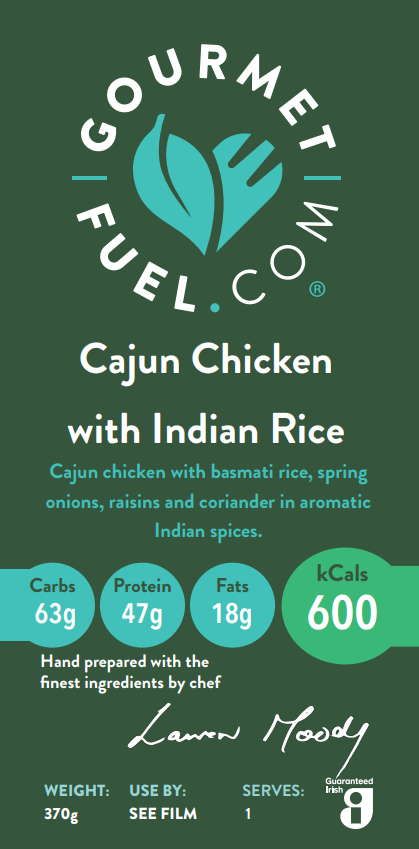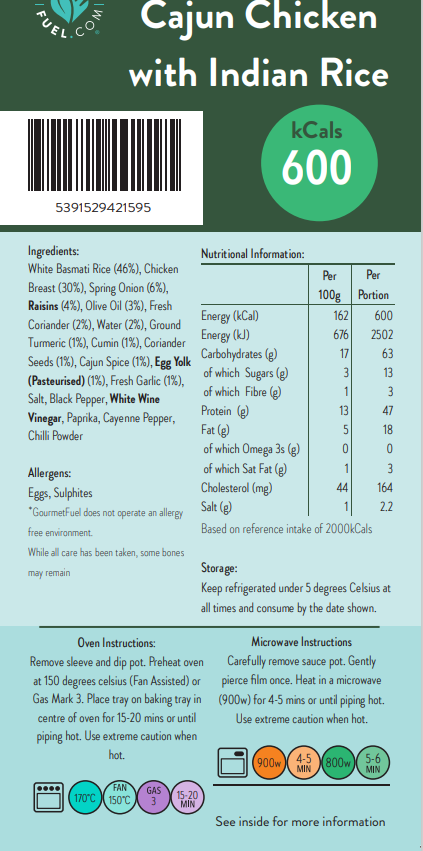Nutrition Labelling
Posted by Ruth Jeffers | 7th Apr 2022
Food labels help customers to make informed and educated choices when purchasing foods. They provide important information regarding ingredients, allergens, nutrition and storage instructions. At a glance, it may look like these labels contain a lot of information - so here are some guidelines to help you make an informed decision!
Front of pack labelling
The first thing you often see when looking at food packaging is its front of pack labelling, which is often presented like this:
The ‘traffic light labelling’ system allows customers to make a quick and informed decision about the foods they are purchasing using colours indicating low (green), medium (orange) or high (red) levels of the nutrient in a food. It is generally written as per serving or per 100g. 100g of a product may be more or less than one serving, depending on the food.
When purchasing our meals, you will see the front of pack labelling on our sleeve looks like this:

More detailed nutritional information can be found on the back of a label and will include the following information.
Energy
Kilojoules (kJ) and kilocalories (kcal) are the units used to measure energy in food. Here in Ireland, we tend to use calories (kcal) as the common unit of energy when referring to foods, however under EU law, it is required that both are included on food packaging.
Different nutrients contain different calories per gram
- Carbohydrates (CHO) contain 4kcal/g
- Proteins contain 4kcal/g
- Fats contain 9kcal/g
Total fat
It is recommended to consume no more than 20-35% of your daily energy (kcal) from fats. For an individual consuming 2000kcal/day this would equate to 400-700kcal/day from fats (including saturated).
Saturated fats
High intakes of saturated fats can contribute to raised cholesterol levels. It is recommended to consume no more than 10% of your daily energy (kcal) from saturated fats. For an individual consuming 2000kcal/day, this would equate to a maximum 200kcal/day from saturated fats. Foods that contain less than 0.1g saturated fat per 100g would be considered low in saturated fats.
Sugars
High intakes of sugar have been associated with increased risk of type II diabetes, obesity and tooth decay. It is recommended to consume no more than 5-10% of your daily energy (kcal) from sugar. This excludes natural sugars found in milk, fruit and vegetables (excluding fruit juices).
Salt
A food is considered low in salt if it contains no more than 0.3g salt per 100g. High intakes of salt can be linked to high blood pressure, which is a risk factor for developing cardiovascular disease. The RDA of salt is 4g/day for adults.
Fibre
A food is considered high in fibre if it contains more than 6g fibre per 100g.The RDA of fibre for adults is 25g/day. High intakes of fibre contribute to a healthy digestive system and have been proven to reduce risk of constipation, colorectal cancer and type II diabetes. Foods high in fibre include brown pastas, bread and rice, fruit and vegetables.
Protein
The RDA of protein is 0.8g per kg of body weight. When trying to gain muscle mass, this can be increased to 1.2-2.0g per kg body weight. Protein is an essential macronutrient that aids in the maintenance and repair of muscle and bone tissue.
Vitamins & minerals
When included on nutrition labels, vitamins and minerals generally appear as %RI, which means percentage of reference intake. Reference intake refers to the approximate amount of a nutrient that an adult needs in a healthy and balanced diet. Of course this will vary from person to person for a number of reasons, such as gender, age, weight etc., but this is just an approximation based on the average requirements in a population. You will find all of the above information on the back of our product sleeves.

Hopefully this blog will help you to understand more about the food that you eat and to be confident in reading a nutrition label. Please don't hesitate to contact us if you have any further queries!

